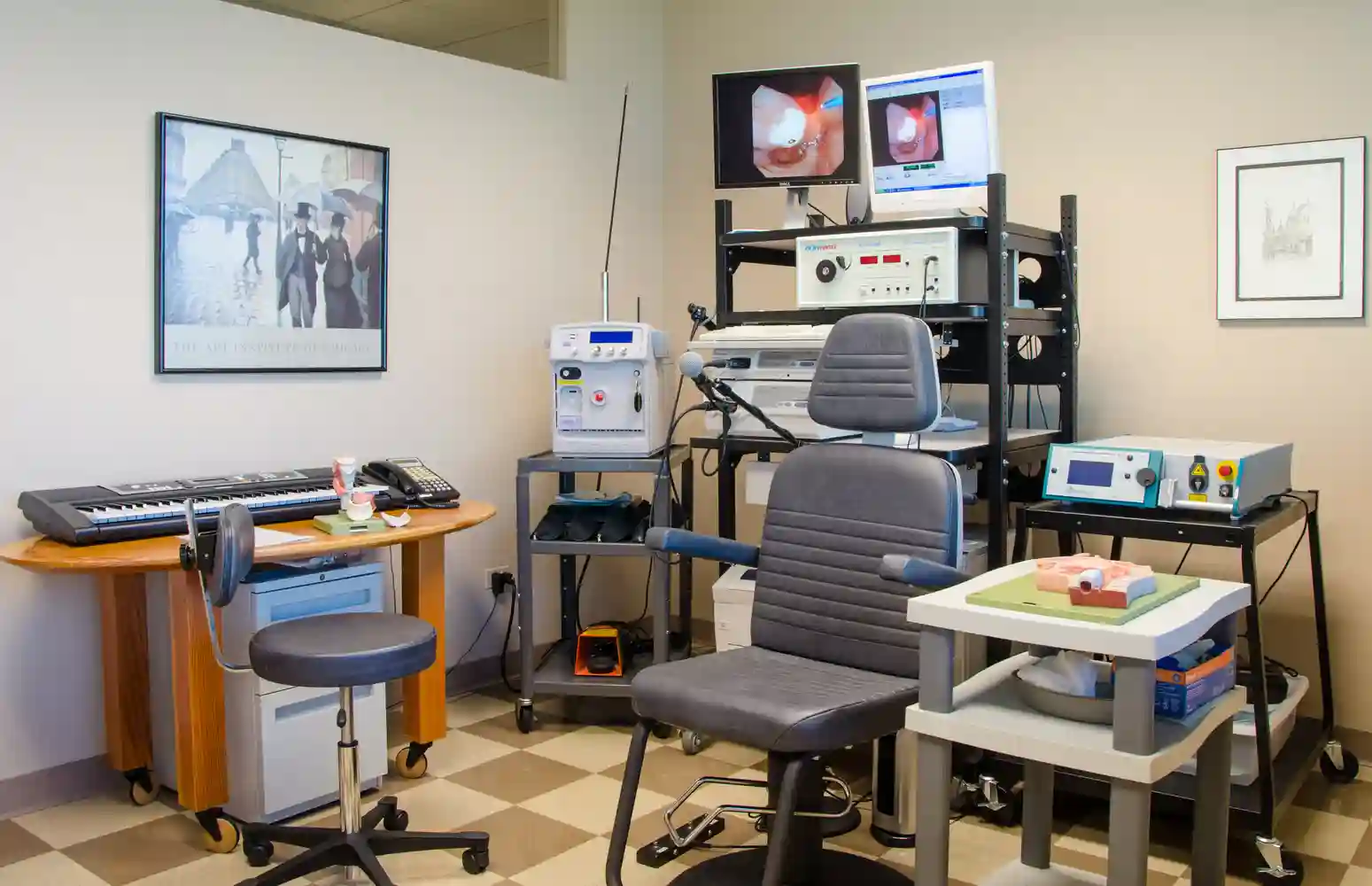
Integrative Diagnostic Model
Our clinicians use Dr. Bastian’s unique three-step diagnostic model:
- Patient history, the story of the problem.
- The vocal capability battery, a special kind of listening to the voice to understand its capabilities, limitations, and aberrations.
- Videoendoscopy or videostroboscopy, to examine visually the structure and function of the larynx and other parts of the upper aerodigestive tract.
Taken together, these three diagnostic components help our physicians offer a precise diagnosis on the spot.
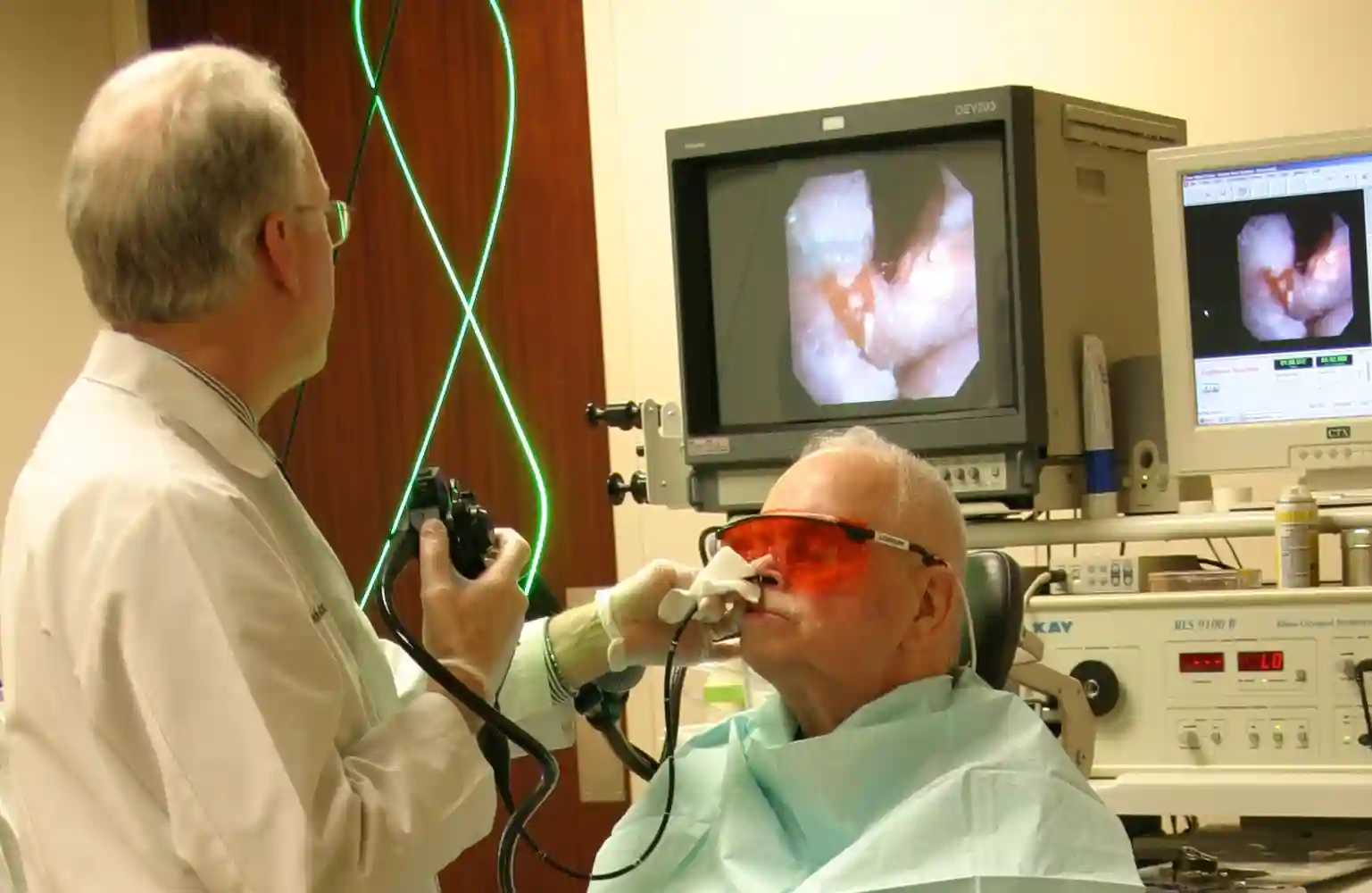
Videostroboscopy
After taking the patient’s history and assessing the voice’s capabilities and limitations, BVI clinicians visually inspect the larynx, including vocal fold vibration, and other parts of the upper aerodigestive tract using state-of-the-art equipment with remarkable optical resolution and magnification. This level of visual clarity helps BVI clinicians to avoid being misled by “red herrings”—obvious but irrelevant visual findings—and also to discover more subtle visual clues.
Benefits of videostroboscopy
This diagnostic technique is performed in the state-of-the-art facilities of BVI. Laryngeal videostroboscopy is a technique of examining the larynx that includes special endoscopes coupled to both continuous and strobe light, a video system, a TV monitor, and a computer.
This technique produces highly- magnified views of the larynx that are videodocumented for later study/review with patient, speech pathologist, family, and so forth. In normal light, the vibration of the folds would appear as a blur; the strobe light allows assessment of apparent individual cycles of vibration.
Office esophagoscopy
In keeping with the movement in medicine toward minimally invasive methodologies, a newer endoscope has been developed by medical technology companies and called the transnasal esophagoscope (TNE). This new videoendoscope allows Bastian Voice Institute physicians to visualize not only the larynx and throat but also the entire length of the esophagus into the stomach, to diagnose or to follow conditions such as strictures, Barrett’s esophagus, and so forth.
Instead of requiring a hospital-based gastroenterology laboratory, these procedures are typically done in a non-sedated or minimally sedated patient sitting in a chair after they have gargled / swallowed topical numbing medicines. Those who do this without sedation can drive to and from the appointment and even return to work the same day as the procedure.
Indirect procedures on the larynx and pharynx
Indirect procedures most commonly use a laryngeal telescope and video system to illuminate and magnify the larynx and pharynx. The patient sits in a special chair and is topically anesthetized and sometimes sedated. In contrast to direct laryngoscopy, general anesthesia is not needed.
Procedures amenable to indirect surgery include biopsy of a suspicious lesion; injection of cymetra for vocal fold paralysis; cidofovir injection for laryngeal papillomatosis. These and other similar procedures can be performed routinely in the video-endoscopy procedure room, thereby avoiding the need for general anesthesia and an operating room facility.
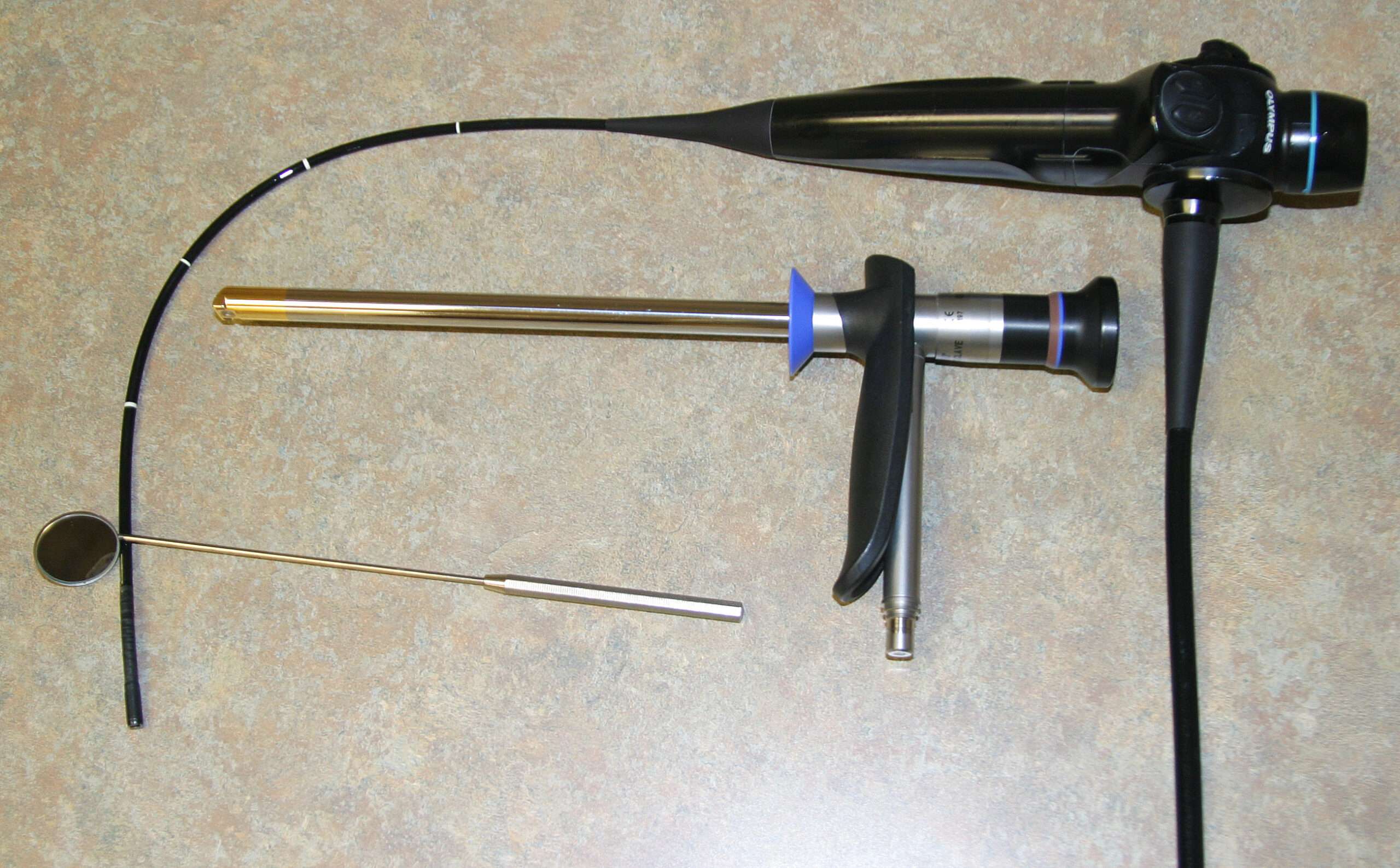
Office-Based Surgery
Most larynx and pharynx surgeries worldwide are performed in the operating room, due to the need for general anesthesia. With the arrival of advanced digital optics and the use of topical (local) anesthesia, however, Drs. Bastian and Richardson handle many such procedures in a specially equipped videoendoscopy room (with pulsed-KTP and Thulium fiberoptic lasers) in the office—saving patients both time and money.
Pulsed-KTP and Thulium Laser Technology
Building on our pioneering development, since 1983, of office-based surgery on the laryngopharynx, Bastian Voice Institute utilizes two types of lasers in its videoendoscopy procedure room capabilities.
With the thulium laser, tissue effects are similar to those of the CO2 laser—except that laser energy is delivered via a glass fiber, passed through the channel of a flexible video-endoscope. We use the thulium laser primarily in the treatment of papillomas, granulomas that need a “stalk” divided, and clearly benign leukoplakia.
Also for office-based surgery is the pulsed-KTP laser. Laser energy is likewise delivered via a glass fiber, but the chromophore is not the water molecule, but instead the hemoglobin molecule, which makes this laser well-suited to treating vascular lesions, including capillary ectasia, lower-bulk papillomas, sessile granulomata, and pre-cancerous lesions or early, superficial carcinomas.
“Office-based” surgery is not appropriate for all lesions: e.g. those seen in singers with otherwise-irreversible lesions, or for cysts and glottic sulci or when large cancers are to be removed via laser excision. When appropriate, however, an advantage of videoendoscopy procedure room laser surgery is that patients can drive themselves to and from the procedure, saving both time and expense. In addition, certain tracheal lesions are more easily accessed through this approach, and persons with anatomical or medical issues that prohibit general anesthesia may be more safely and effectively managed.
Surgical/procedural services
First, some history. In the 1800s, surgery in the larynx was accomplished with the patient sitting in a chair and the surgeon reaching over the back of the tongue and down into the larynx with curved instruments. Initially this had to be performed without the assistance of even topical anesthesia! Subsequently, topical anesthetics were developed, making this kind of procedure much easier.
With the development of modern techniques of general anesthesia and endoscopes with tiny light bulbs and later fiberoptic light sources at their tips, upright, “chair” surgery became less and less common. By the 1970s, it had largely become a lost art.
By the early 1980s, excellent optical endoscopes, video technology, topical anesthesia, and short-acting sedatives made “chair surgery” once again logical. In the United States, Dr. Bastian helped to pioneer the reintroduction of office-based surgery via his teaching at Loyola University of Chicago, training of fellows, visiting professorships here and abroad, teaching at the American Academy of Otolaryngology, and his publications. Today, these approaches have become much more common, and they remain a specialty of Bastian Voice Institute physicians.
The advantage of office-based surgery is that the procedure – whether biopsy, injection, laser surgery, or otherwise – is performed in an awake though sometimes sedated patient whose throat is “numb.” Unsedated patients can drive themselves home afterwards. The clinical processes of both diagnosis and treatment are noticeably sped up, and of course the approach is highly cost-effective. This methodology is particularly advantageous in individuals whose anatomy makes operating room direct laryngoscopy difficult or whose medical condition is poor, increasing the risk of general anesthesia. The majority of patients find this approach very tolerable, and Drs. Bastian, Richardson and Hoesli have performed many hundreds of biopsies, injections, and other procedures using this tactic.
Laser surgery at BVI
To our knowledge, Bastian Voice Institute was the second facility in the U.S. to have a RevoLix (LisaLaser) device available in the office setting. Particularly advantageous for minimal/recurrent disease, this laser can be used on selected lesions in the videoendoscopy procedure room of BVI’s facilities with the patient awake and topically “numbed,” rather than in the operating room.
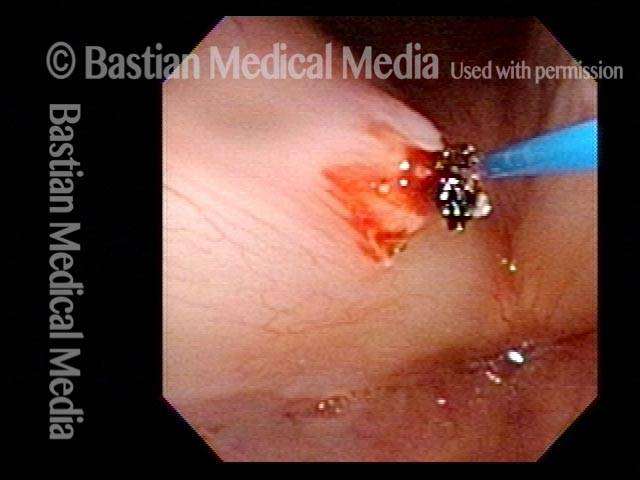
Vocal Fold Microsurgery
Many people—especially professional singers—may suffer from hoarseness or other vocal problems caused by vibratory damage, or by other lesions on their vocal folds. Drs. Bastian, Richardson and Hoesli have particular expertise and experience in surgically treating injuries that otherwise will not resolve. They have operated on an estimated 1,500 singers, as well as thousands of non-singer patients.
Is vocal fold microsurgery dangerous?
Bastian Voice Institute physicians do a lot of vocal fold microsurgery. Occasionally done for diagnostic reasons, it is more commonly performed to improve the quality and capabilities of the voice, when medical / behavioral treatments do not suffice. Combined physician experience with vocal fold microsurgery comprises a conservatively-estimated 4000 cases to date. Common lesions addressed via microlaryngoscopy include irreversible nodules, polyps, vocal fold cysts, glottic sulcus, capillary ectasia, vocal fold scarring, as well as benign and malignant tumors. Noteworthy subsets of the BVI experience include:
- Vocal fold microsurgery in singers – an estimated 1200 cases to date.
- Vocal fold carcinoma. This includes individuals who were recommended for radiotherapy or a much larger operation elsewhere, but who instead were treated successfully via laser excision, almost always on an outpatient basis.
- Individuals referred by other otolaryngologists because of extremely difficult anatomy that prevented visualization of the vocal folds in the operating room.
- Rare lesions such as amyloidosis, granular cell tumors, neuroendocrine carcinoma, post-radiation sarcoma, and scarring disorders.
- Recurrent Respiratory Papillomatosis (RRP), with an adult-only experience numbering approximately 140 patients.
Vocal fold microsurgery in singers
When Dr. Bastian finished residency, vocal fold microsurgery in singers was discouraged, and often condemned, by the community of voice clinicians. An independent thinker, Dr. Bastian was arguably the first in the United States to consistently and publicly affirm the safety and voice-restoring potential of expertly-performed vocal fold microsurgery in this group. This kind of surgery is appropriate for otherwise-irreversible lesions.
Dr. Bastian says, “Excellent, voice-restoring results can be achieved routinely by technically proficient, perfectionistic surgeons attempting to improve and often restore the voice completely using techniques that are low risk.”
The combined BVI caseload of surgery in singers numbers approximately 1200 to date. This caseload includes not only avocational singers but also a significant number of regionally-, nationally-, and internationally-known performers.
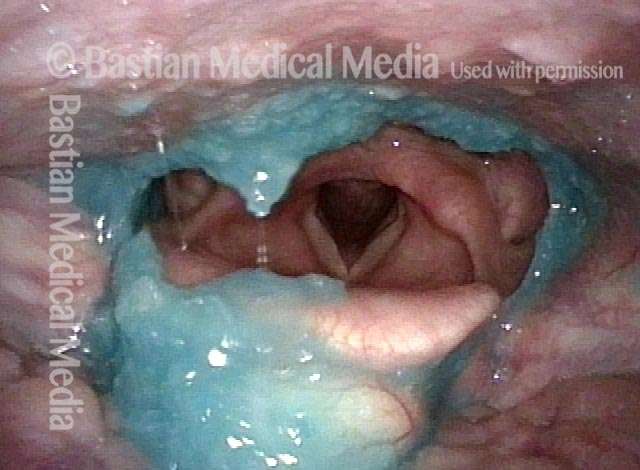
Videoendoscopic Swallowing Study (VESS)
Developed by Dr. Bastian as a way to evaluate swallowing problems. The clinician uses a flexible endoscope positioned just above the patient’s palate to watch from inside as the patient swallows blue-colored applesauce, or water, or orange-colored cheese crackers. The x-ray-based videofluoroscopic swallowing study (VFSS) is also performed at a nearby facility, when needed.
VESS vs. VFSS | What is the difference?
VESS is a comprehensive, often stand-alone methodology patterned in many ways after the videofluoroscopic swallowing study (VFSS). VFSS uses three consistencies of food material – liquid, puree, and solid – mixed with barium and administered under the supervision of a speech pathologist in the radiography suite of Good Samaritan Hospital.
By contrast, VESS uses visual videoendoscopic imaging of the swallowing tract. The patient’s anatomy and neurological examination (palate, pharynx, and larynx) are first assessed in detail using various elicitation techniques. The presence or absence of retained saliva is next noted.
Finally, the patient is offered, in an appropriate sequence, water, pudding, and cracker each stained with food coloring to assess swallowing ability. When there is question about esophageal function, VFSS may also need to be done.
When VFSS has already been done, or when follow-up swallowing studies are needed, VESS typically is used as an alternative to VFSS.
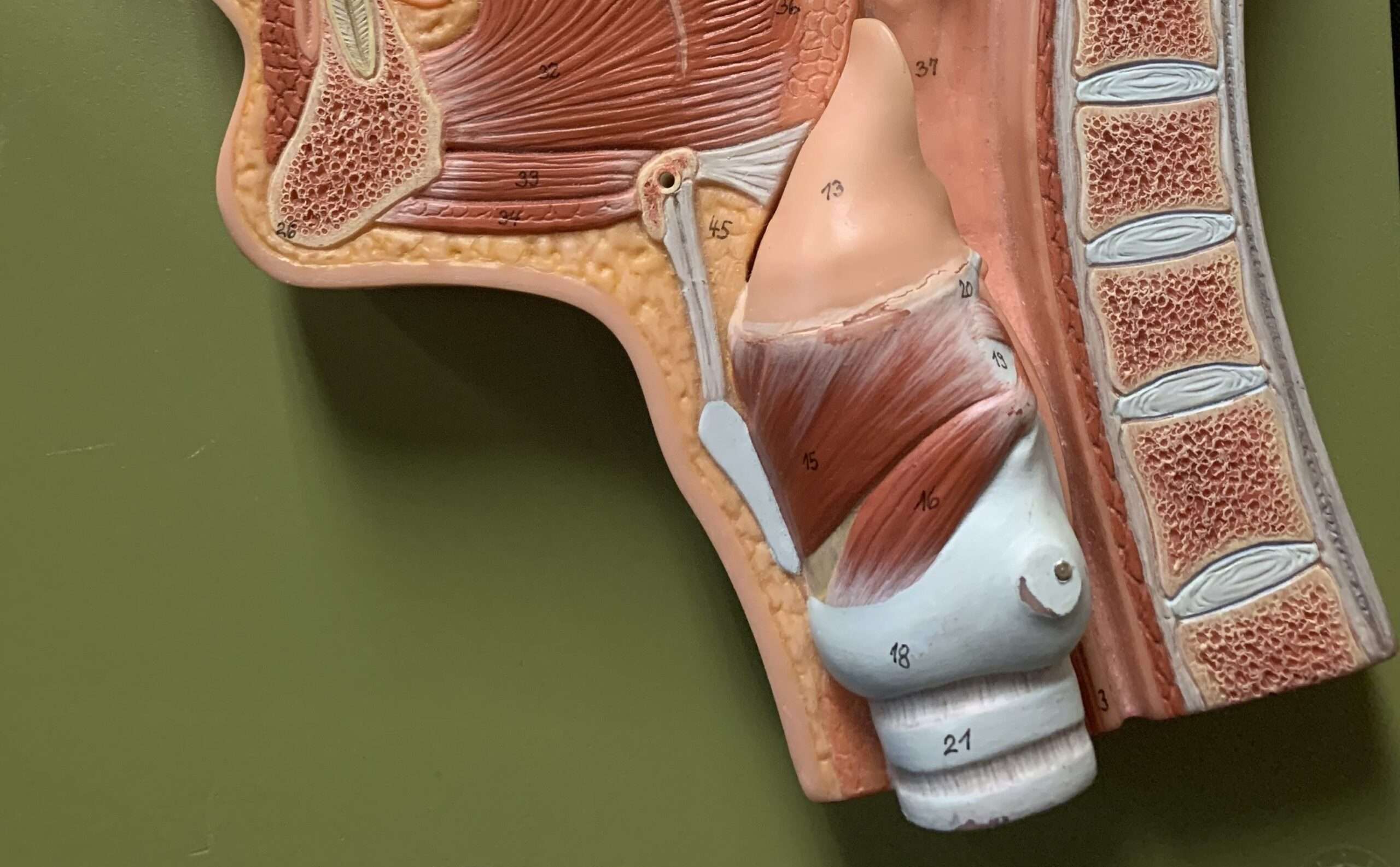
Surgery for Antegrade Cricopharyngeus Muscle Dysfunction (A-CPD)
This disorder causes people to have progressive difficulty in swallowing, particularly solid foods and pills: the cricopharyngeus muscle fails to relax and allow material to pass through. To treat this disorder—with or without a Zenker’s diverticulum, a herniated pouch that collects food and saliva—BVI clinicians have been in the vanguard of physicians using endoscopic (through-the-mouth) laser surgery, in preference to the more traditional neck-incision approach.
Swallowing disorders amenable to surgery
The primary disorder here is Antegrade Cricopharyngeus muscle (upper esophageal sphincter) Dysfunction (A-CPD), with or without Zenker’s diverticulum (ZD). In many locales, this can legitimately be considered an “orphan” disorder, in that it is sufficiently uncommon that few physicians develop significant experience and expertise with it. For that reason, Bastian Voice Institute physicians attract patients with this problem from a wide region.
While at Loyola University Medical Center, Dr. Bastian introduced the endoscopic rather than open (through a neck incision) method for dealing with A-CPD +/- ZD. Our doctors believe that they currently have unrivaled experience with this condition in the upper Midwest.
Under a short general anesthetic, the patient undergoes esophagoscopy through the mouth after which the carbon dioxide laser is used to divide the offending non-relaxing muscle so that it will allow solid food in particular to pass more easily. Some patients can undergo this restorative surgery as an outpatient; others spend a single night in the hospital and are discharged to home the morning following surgery.
Patients who undergo this procedure are typically extremely pleased with the enhancement to their quality of life: before surgery they may have been limited to liquids, puree consistency foods, and maybe some soft foods. Solid food and pills consistently lodged in the throat at the level of the mid to low neck. After surgery, the ability to eat a more normal diet is typically restored, or at the least is markedly improved.

Larynx Cancer Surgery
Methods for treating larynx cancer include surgery, radiation, and chemotherapy. For smaller tumors in particular, laser excision through the mouth can offer dramatic advantages. BVI clinicians have a large and noteworthy experience with larynx cancer, including not only endoscopic laser approaches but also (when tumors are very advanced) partial or total laryngectomy.
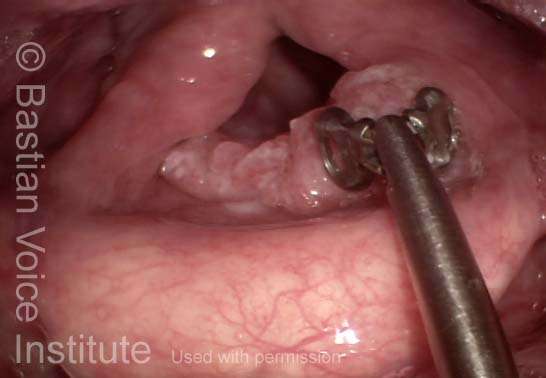
Biopsy of selected lesions of the larynx, pharynx, trachea, or esophagus
At BVI, the majority of biopsies are performed on-site, in the videoendoscopy procedure room. A return to this approach was pioneered by Dr. Bastian. On-site BVI biopsies are performed using special endoscopes and other instruments along with video apparatus. The individual is topically anesthetized and sometimes mildly sedated. If unsedated, the individual can drive himself or her-self to and from the procedure. BVI physicians continue to use “traditional” operating room biopsy techniques in situations where that approach is better suited.
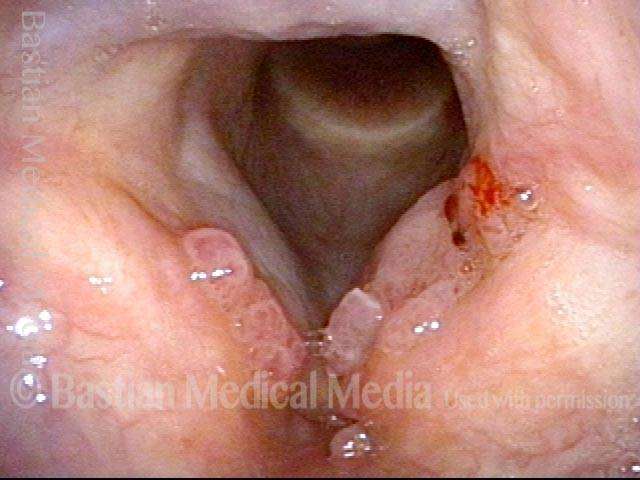
Treatment for Recurrent Respiratory Papillomatosis (RRP)
RRP is caused by chronic infection with the human papillomavirus (HPV). The result is a proliferation of wart-like lesions within the larynx and, occasionally, the trachea. BVI has a caseload of 170 adult patients. Our clinicians have been quick to test or adopt adjuvants (supporting treatments to surgery) such as interferon, indole-3-carbinol, cidofovir, artemisinin, and avastin.
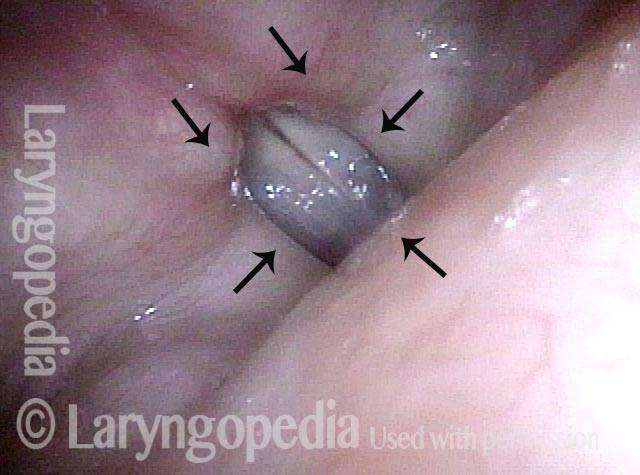
Botox™ Injections for Spasmodic Dysphonia (SD)
SD is a rare neurological disorder which affects voice control. The most effective treatment in widespread use is periodic injection of Botox™ into the muscles of the larynx. Typically, three or four injections per year are sufficient to keep the voice functioning at a much improved level. BVI clinicians were among the first in the country to use Botox™ for treating SD, dating back to 1989. They currently perform about 80 Botox™ injections per month,
SD Caseload Statistics
BVI physicians treat hundreds of persons with spasmodic dypshonia. Lifetime caseload is approximately 1,300 patients. Injections are offered each week, using a technique developed by Dr. Bastian that strives to provide consistency between injections. This technique was designed for use with EMG guidance. Rarely, individuals prefer to be injected using an indirect approach.
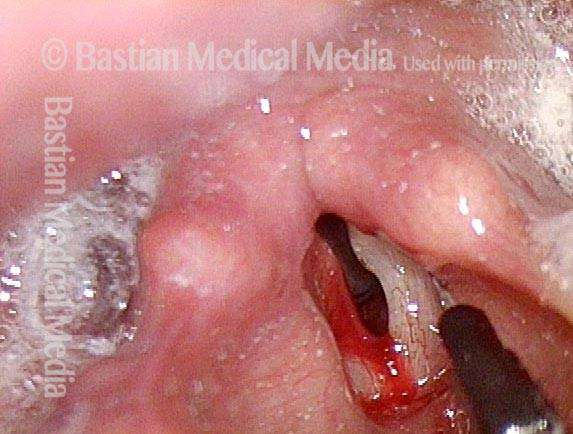
Vocal Fold Injections or Implants for Paralysis
For people suffering from a weak, breathy voice caused by vocal fold paralysis or atrophy, BVI offers voice gel injections (for temporary benefit, though typically lasting many months). When the neurological impairment is known to be permanent, then silastic or other implant material may be inserted into the fold through a neck incision, with the patient under local anesthesia with sedation in an outpatient setting.
Cymetra™ injection for vocal fold paralysis
Used primarily but not exclusively as a treatment for vocal fold paralysis, this procedure is virtually always done at BVI in the videoendoscopy procedure room, rather than under general anesthesia in an operating room. Cymetra™ is a human collagen product. The collagen is micronized (ground into tiny particles) and treated to remove any possibility of contamination with bacteria or viruses. It is then made into a dry powder. Before use, it is reconstituted to create a paste consistency that can be injected through a relatively fine needle.
Commonest use is to fatten and firm up a paralyzed vocal fold. Duration of benefit varies between six weeks and six months. Consequently, this procedure is used when only temporary assistance is needed – as when it is believed that the vocal fold’s function will recover.
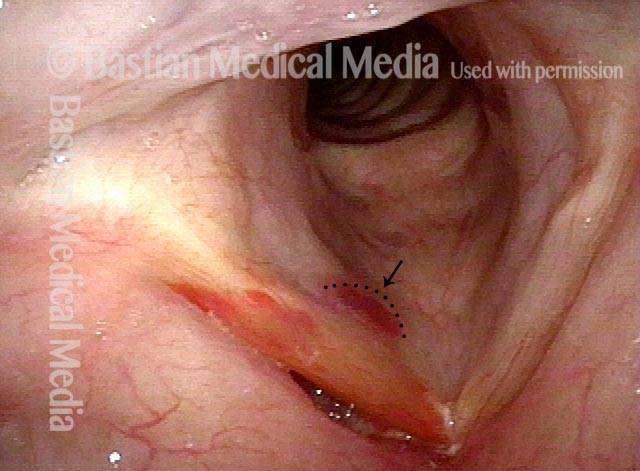
Sensory Neuropathic Cough Treatment (SNC)
More than 15 years ago, Dr. Bastian discovered a neurogenic form of coughing, which he terms “sensory neuropathic cough.” Management includes titration trials of various neuralgia medications. BVI has since attracted as many as 1,000 such patients from as far away as Brazil. Many of these patients are managed over time from great distance, via phone follow-up.

Retrograde Cricopharyngeus Dysfunction (R-CPD) | Inability to Burp
Another BVI discovery is a previously unknown disorder causing severe daily distress of inability to belch, socially-awkward gurgling noises, bloating and other abdominal distress and in most cases excessive flatulence. A single injection of Botox into the upper esophageal sphincter resovles this problem permantly in 4 of 5 patients. So far (January 2024) BVI doctors have treated over 1,600 patients from all 50 states and 25 foreign countries.